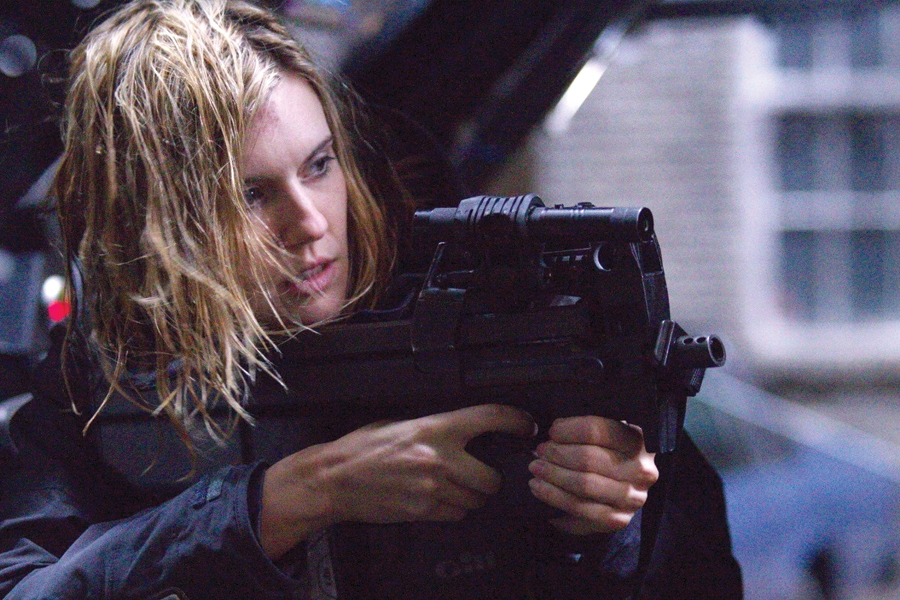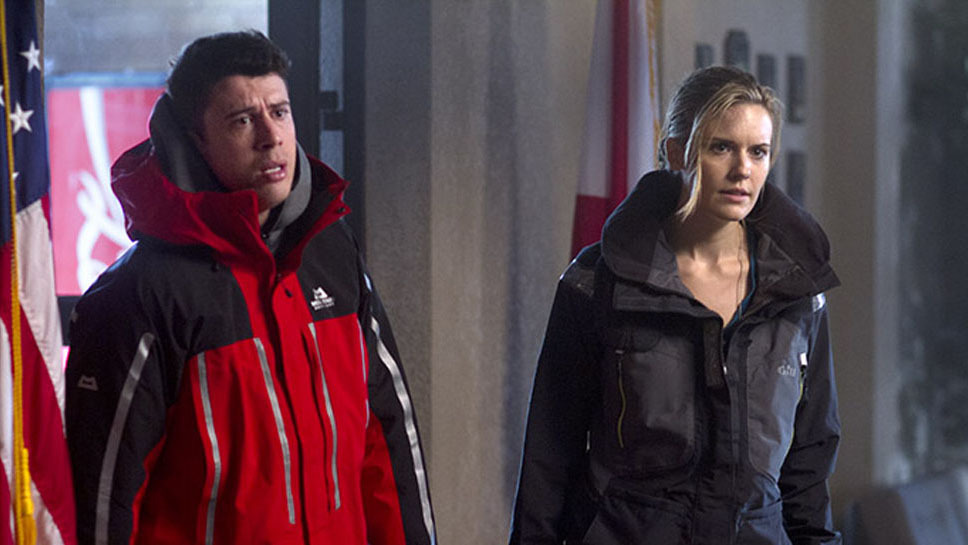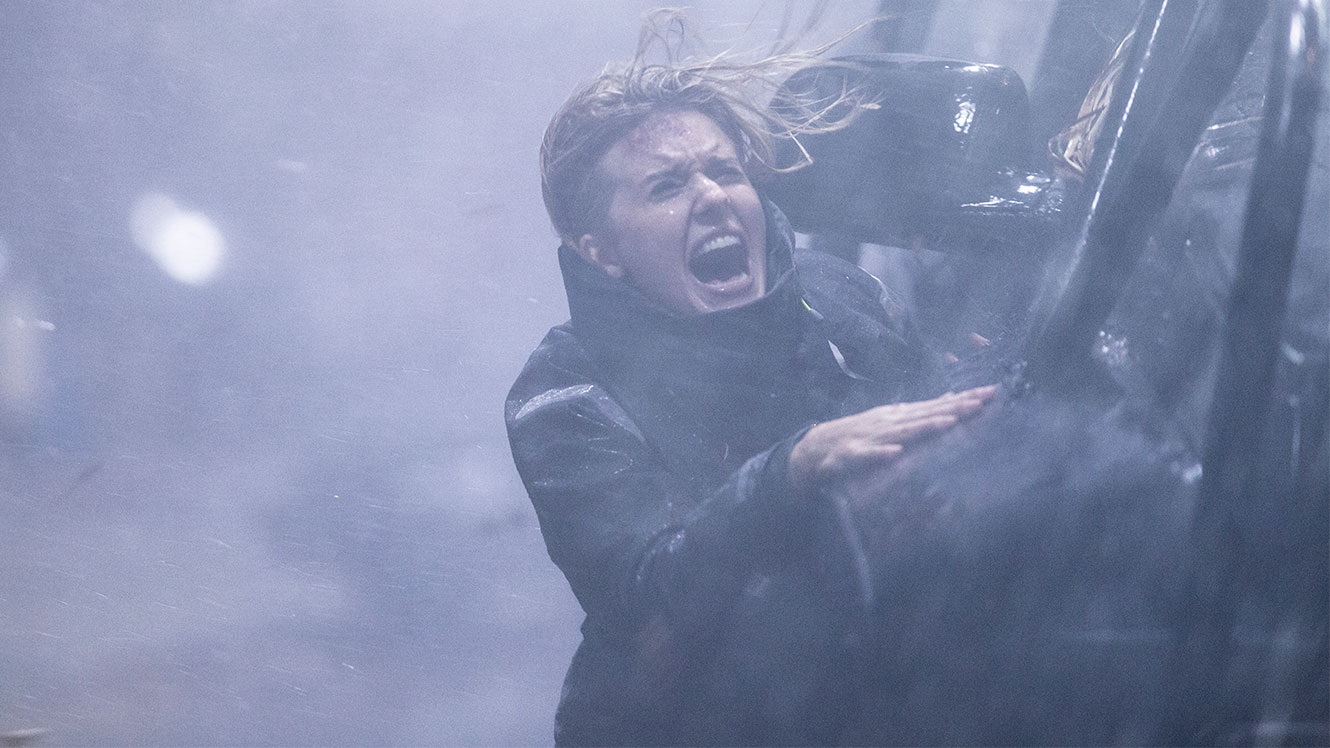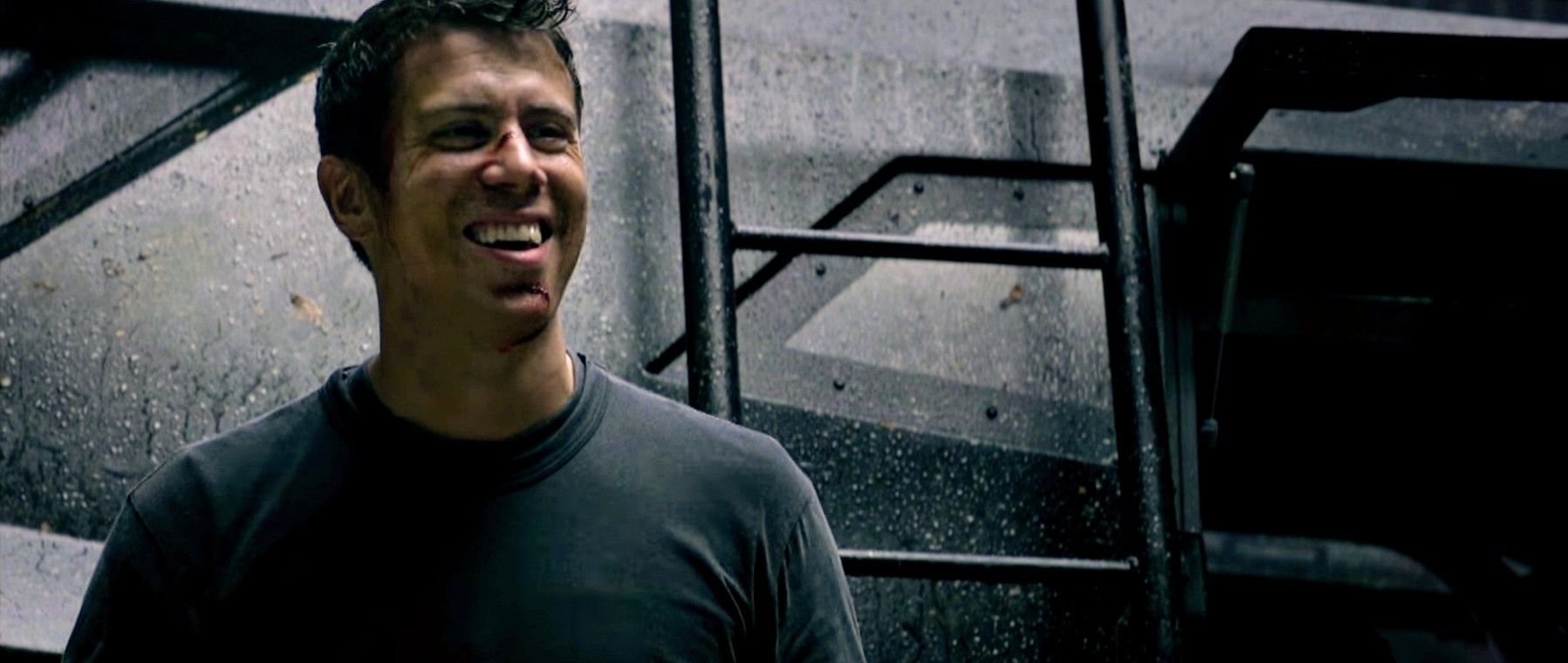Rob Cohen interview: The Hurricane Heist, hubcaps, Netflix
We talk to the director of The Hurricane Heist about stunts, going to the loo in action films, and the rise of Netflix...
Don’t the heroes in action movies get a bit hungry between car chases and shoot-outs? During their hours-long orderals with bank robbers or international terrorists, wouldn’t they have to stop off to use the loo now and again?
These are just the kinds of questions, it turns out, that director Rob Cohen’s been asking himself over the past few years or so. Cohen is no stranger to the action thriller genre – his previous films include the original Fast And Furious, xXx and Stealth – but with The Hurricane Heist, he finally gets to answer those questions with a resounding yes.
In the midst of the stormy intrigue – which sees an ATF agent (Maggie Grace) team up with a meteorologist (Toby Kebbell) to foil a daring robbery staged in a hurricane – but at one point, they take a much-needed break to go to the loo in an empty car park. Later, they talk about their plans to halt the robbers while pausing to eat peanut butter and jam sandwiches.
It’s moments like these that make The Hurricane Heist – very much a B-movie thriller – quite endearing, and besides, Cohen and everyone involved seems to have their tongues in their cheeks throughout the whole affair. This certainly explains some of the action scenes, where Toby Kebbell throws hubcaps at bad guys, like a ninja throwing pointy stars, for example, or hangs suspended in the air like a big human kite.
With moments like that, we had to bring them up with Cohen himself, and despite an audibly bad cold, he proves good value, as he talks about loo breaks, throwing hubcaps, mid-budget movies and the rise of Netflix…
I get the feeling you enjoyed making Hurricane Heist – there’s a sense of fun about the film.
Yeah, well, you know. If you’re gonna do a cross-genre film like this, it’s best not to take yourself too seriously, and to remember that at all times this kind of confection is an entertainment. To have fun with it, and bring fun to the audience.

I understand as well that things like eating sandwiches and going to the loo are things you wanted to see in an action film.
[Chuckles] Yeah. When I realised, I said that I’ve seen so many action films where they never stop to go to the bathroom. They never stop to eat anything. And you go, well, you know, maybe we should put a little humanisation into this, by giving them these chances to do what normal people do in the middle of an extraordinary situation. So I got a chuckle out of doing that in this film.
What was the script like before you came aboard, then? Was it more serious, or was it always heightened in that way?
No, it was dead serious. It was so serious. In the original script, they had a meteorologist, and the minute the trouble started, he turns into a cross between James Bond and Jason Bourne.
Right.
So I went, “Noo, no, no, no.” He’s a meteorologist, you know? I want to switch it up, so that he’s the weather expert, but the woman, the treasury agent, will be the gun expert. And that, I think, was the fulcrum that lifted the whole thing to another level in saying, “Alright, if the woman is the gun hero, and the man is sort of the intellectual hero, then this approach ought to be really imaginative, rollicking and fun.” Fun is a big part of why I make movies – I like my audience to enjoy themselves. To come out, you know, feeling they were excited or adrenalised. Some reaction to the movie other than, “Okay, another movie.” You know?

Yeah, absolutely. So what was the process of casting those two leads like? Because you need to find two people who fit those roles, but then it’s a physically demanding film.
Well, the minute I put the script out there as we were casting, I got an email from Toby Kebbell, who I’d known in the past. He was saying, “I read your script. I want to play the brother” – what is now the Ryan Kwanten role. I said, “Oh, well that’s tremendous, thank you.” I went and told the producers and financiers that Toby was going to play Breeze. We kept casting for the lead and casting for the lead, and everybody I saw seemed too pretty, too Hollywood, too actor-y. In those meetings, I met Ryan Kwanten, and I love Ryan. I thought, “Wow, we’ve got to have him in the film, but I don’t know if he’s Will”. Then I went, “Oh wait a minute, Toby should play Will, Ryan should play Breeze.” So I took Toby to dinner and I asked him, “Would you be willing to consider playing Will.”
He almost cried. He said, “You’d consider making me the lead in your film?” I said, “I have great belief in you, Toby.”
He repaid that belief a thousand times over. So we had the proper personality for Will and the proper personality for Breeze. Casting Maggie [Grace] was like, you know, when I thought of her, I went “Well, she’s been the damsel in distress in three very exciting action films [the Taken series].”
I sent her a note, saying, “It’s your turn to play Liam Neeson.” She responded, and that’s what happened. She responded, and we did it. I’m very proud of what she was willing to do – the training she did, the seriousness with which she took the idea of being an action heroine. I’m very proud of what she did on screen.
With the action scenes, the one I really liked was where Toby Kebbell’s throwing hubcaps like ninja stars. I understand you actually tried that for real?
Yeah we did – and it worked! [Laughs] We had these banks of giant fans that could make a 100 mile-an-hour wind. So we went out there on the back street that we’d built, and I was testing what would happen with a real hubcap first, before we started to work out how to mould and shape them. We were throwing them around, and it was amazing, because if you could get a decent twisty throw to level the disc out, that wind would take it.
The hubcap crashed into one of the parking meters, and I went, “Oh, okay. We’d better test this before we decapitate somebody.” And I left a dent where I hit the parking meter – that’s why that happens [in the movie]. One of the hubcaps clangs into a parking meter because that’s what really happened. We started making them in different weights of plastic, and we got them to where we had enough mass and yet moved really fast. So when you see Toby throw those things, and they make the dogleg, that’s them picking up the wind we were making. It just went round the corner like that.

Was that your approach to the film as a whole? Trying things out, being a bit experimental with the action scenes?
Yeah, well, you know, I had this idea, and I took it to my stunt group and said, “I’d really like the actors to do their own stunts, but we’ve gotta make them super safe. I want you to come back and tell me how we would rig it, so I can put Toby and Ryan on those trucks for real.” In the meantime, we had Maggie training to fight James Rice in the cab. They came back with a rig design that was quite expensive and brilliant, and really with that, in the scene where Ryan jumps and almost misses the truck, that’s in camera – he’s there with a pick-up on the rig, and he almost missed the truck and planted on the road. So [chuckles] it worked – by the skin of his teeth!
How did making this compare with the first Fast And Furious, because they kind of have a similar budget level.
Yeah, very similar. Fast And Furious was $38m, and this one was $35m. I mean, there are many years in between so in some ways this was a lot less in terms of buying power. But you know, it’s a very good zone to make movies in, because you have enough money to do some imaginative things, but not so much money that you can lose control.
It’s the zone that studios hate to be in. They’d rather make an under $5m movie, or an over $150m movie. Not a $35m movie.

Yeah. Why do you think that is though? You’d think that mid-level would be pretty good for them, too – is it because of the costs of marketing? That they stay the same regardless of the budget?
Well, I think they feel that under five, like I did on The Boy Next Door, or any of the Blumhouse films, they have the chance of a breakout that will be vastly profitable. And the next level where they think they have something marketable is up at $150m and beyond. That’s because the kinds of films they’re trying to make depend on so much hardware and software to create. They don’t think anything is marketable that doesn’t have all those bells and whistles. And it’s a shame, because the medium range film has always been the staple of Hollywood, and it’s only lately that it’s [changed]. You know, it’s like a pinball game where there’s only two holes!
Do you think that mid-budget could come back a little bit with streaming and Netflix?
You beat me to it! The Netflix of it all. They want a diversity of programming that will make you buy their service. They have to keep that up to keep the subscribers they already have, so they will take some big chances, like with David Ayer’s movie, Bright, and they’ll spend $80m on that, which would be in the center of the two holes that we just discussed. And many other smaller projects. Because they’re not tethered to marketing costs like studios are – they don’t have to buy full-page ads in the London Times or the New York Times. They don’t have to buy endless amounts of TV, because they own the TV source. They do what they need to do through their own venue.
So they have a good model, financial model, for this enormously successful business. They drive a tough deal; they have a formula, and that’s it. It saves a lot of negotiation, because you know exactly what you’re gonna get on the back end. So you go in and you’re doing it for the fee, and you’re happy to make it, because you’re getting to make films that you wouldn’t get to make in a studio.
With that, our time is sadly up! Rob Cohen, thank you very much.
The Hurricane Heist is out in UK cinemas now.